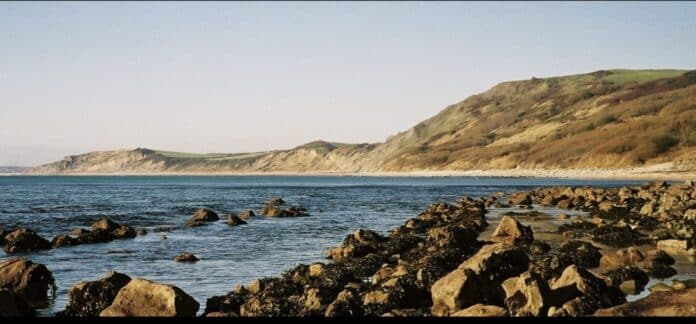Working west from Osmington Mills access to the beach from Osmington via a minor road is either down the steep path from the Smugglers’ Inn car park or from the coast path and steps just to the east of the pub. As with the previous section from Bran Point to Osmington Mills, a low tide is necessary to access the section safely especially the part between the Osmington Mills stream and Goggin’s Barrow (Hannah’s Ledge). The rocks seen on this section are mainly Jurassic in age, dominated by the Corallian but also older Oxford Clay and younger Kimmeridge Clay can be seen. Due to landslips Cretaceous Upper Greensand is also seen on the beach at Black Head Ledges. Folding of the rocks can be seen in the cliffs and this helps to explain why the rocks seen at beach level are varied. Some of the foldng can be seen from the Smugglers’ Inn car park.
Just to the west of Osmington Mills stream are more fine examples of Bencliff Grit sandstone concretions or doggers, also seen in the previous section between Bran Point and Osmington Mills. These again have been weathered out of the weaker sandstone in the cliff and also show fine cross-bedding due to the sediment being transported by strong current action in shallow sea-water in Jurassic times.
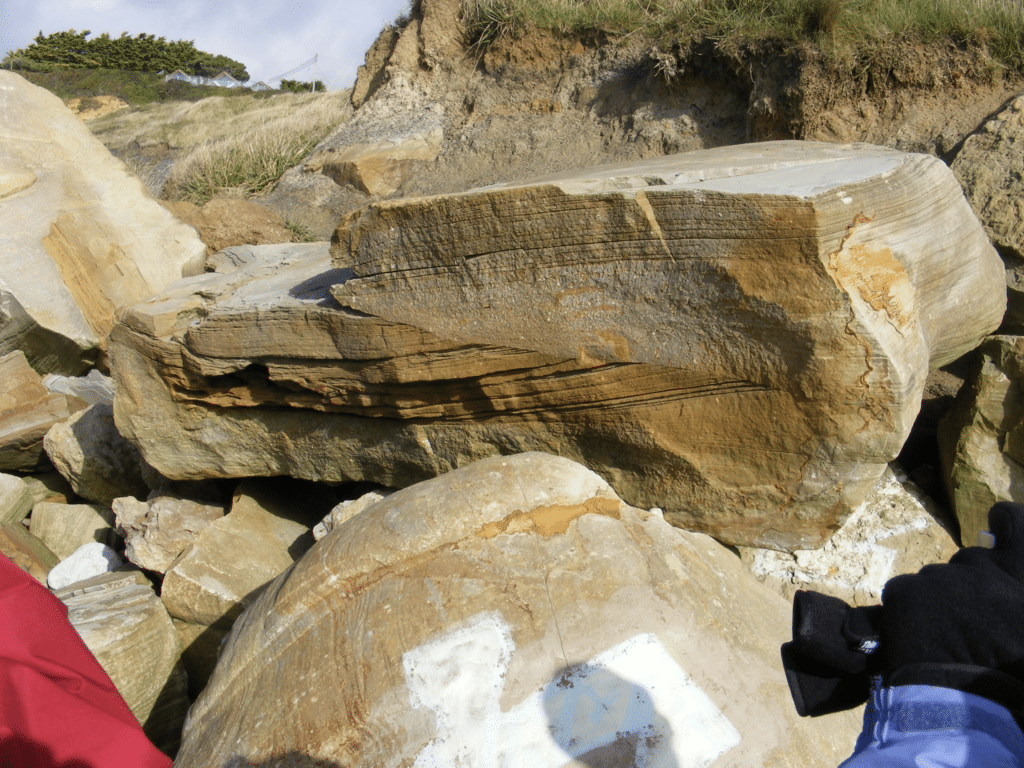
Such a feature is used by geologists to see if the rock is in the orientation it had when it was formed or whether it has been overturned – a ‘way-up’ feature. The block in the picture above is the right way up because of the way the lower beds are cut across (eroded) by later beds.
Just below the Smugglers’ Inn car park the geology is quite complicated with Kimmeridge Clay forming the slumped cliff but on the beach Corallian Beds can be seen. The picture below was taken from the car park looking west towards Weymouth and shows the rock layers (strata) running parallel to the coast. They bend round because they have been affected by folding due to earth movements.
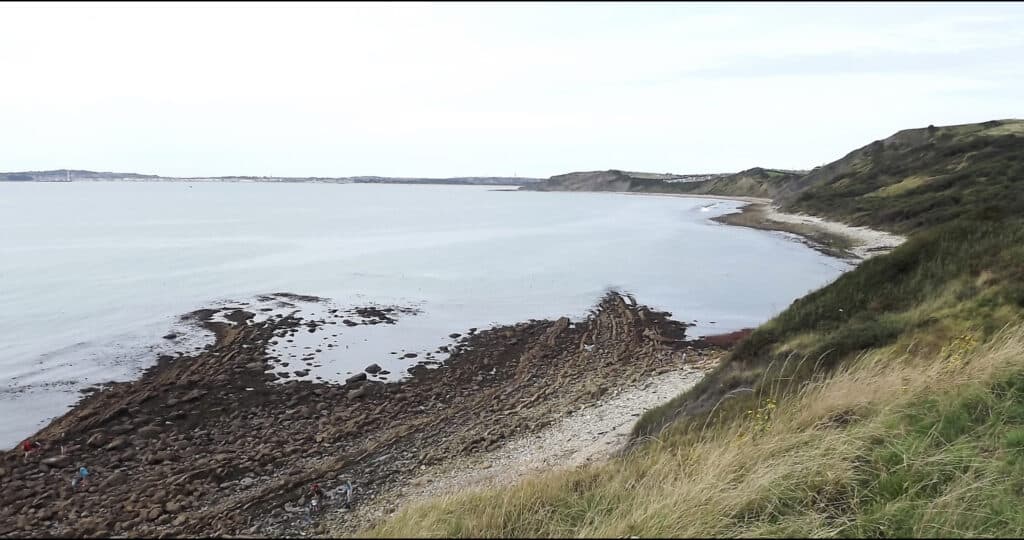
The strata are dipping quite steeply to the north here and the top of the Corallian grades into the Kimmeridge Clay as you move up the beach. If you are lucky you might find a distinctive fossil Torquirhynchia (a brachiopod) which can be found in the clay on the beach (see picture below).

The beach section west of Osmington Mills is constantly changing due to slumping of the cliffs especially after wet weather in the winter months. A major clay flow has developed to the west of the Smugglers Inn car park.

This has brought down interesting blocks of limestone (called Osmington Oolite) which can be seen on the beach with good trace fossils and ripple marks as well as cross bedding.
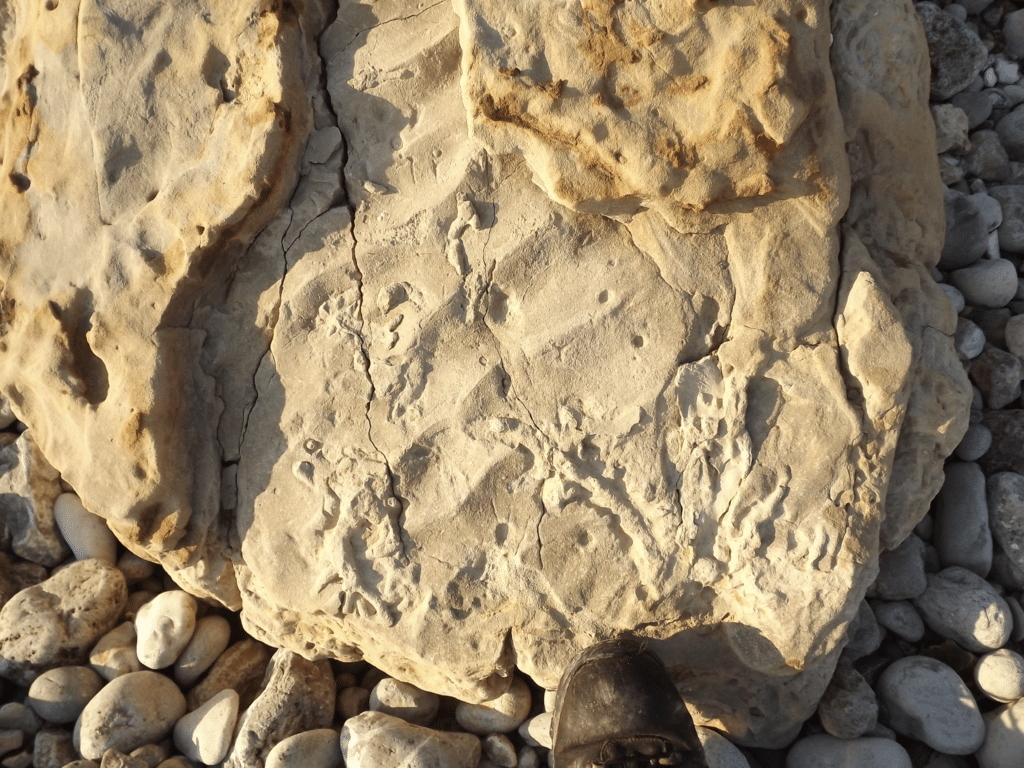
Looking west you can pick out the folds in the cliffs. Just to the east of Redcliff Point is a up fold or anticline with the rock layers (Corallian) dipping away from the centre (Oxford Clay), but moving east there is a down fold or syncline which coincides with Black Cliff (Kimmeridge Clay). At Osmington Mills, another anticline occurs. The centre of the anticline east of Redcliff Point has been eroded away to expose the older Oxford Clay.

Working west from Osmington Mills you will see an extensive boulder strewn section on the beach in the area of Black Head Ledges. The boulders are made of a hard sandstone (the Cretaceous Upper Greensand) which has come down onto the beach from inland due to slumping. Some boulders are fossiliferous but the fossils are difficult to extract. Below is a view of a sea urchin (echinoid).
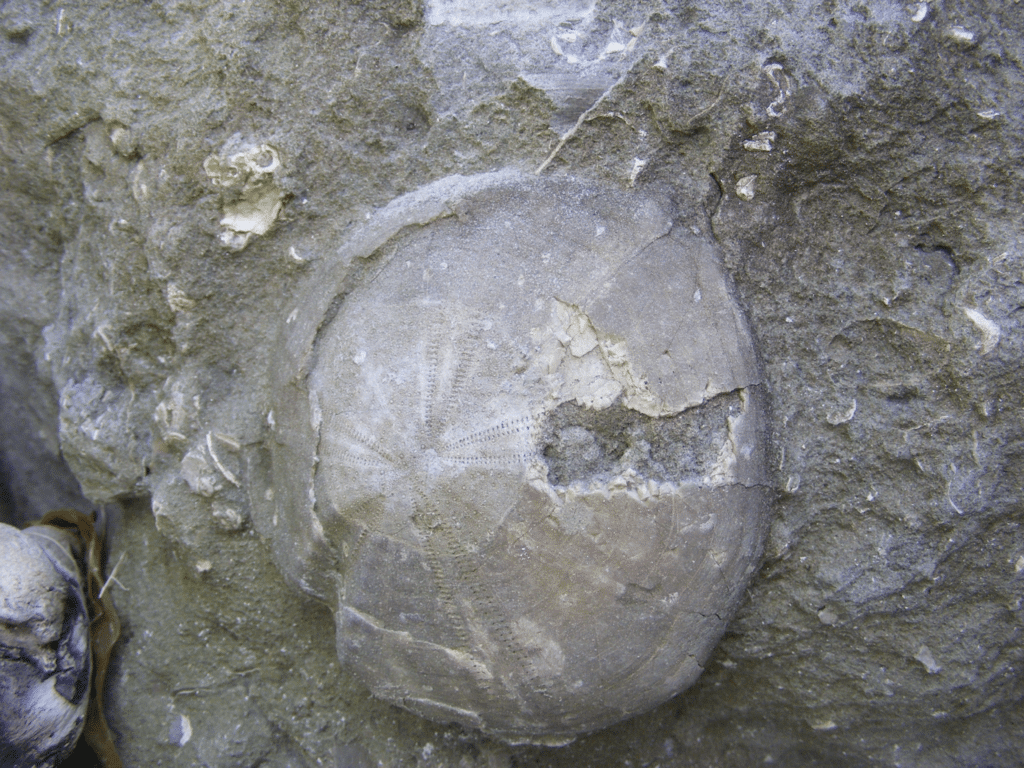
The Upper Greensand is around 90-100 million years old and there is an unconformity (gap in the rock sequence) between it and the underlying Jurassic rocks. The Greensand gets its name from the presence of small grains of a dark green mineral (it may appear to be black) which is called glauconite, which formed when the sediment was deposited in the sub-tropical sea during the mid to late Cretaceous. Further east the Jurassic rocks are again more obvious at beach level
At low tide you will see the beds of rock running parallel with the beach and as you walk along them you are following the strike of the beds. The rocks dip into the cliff (to the north).
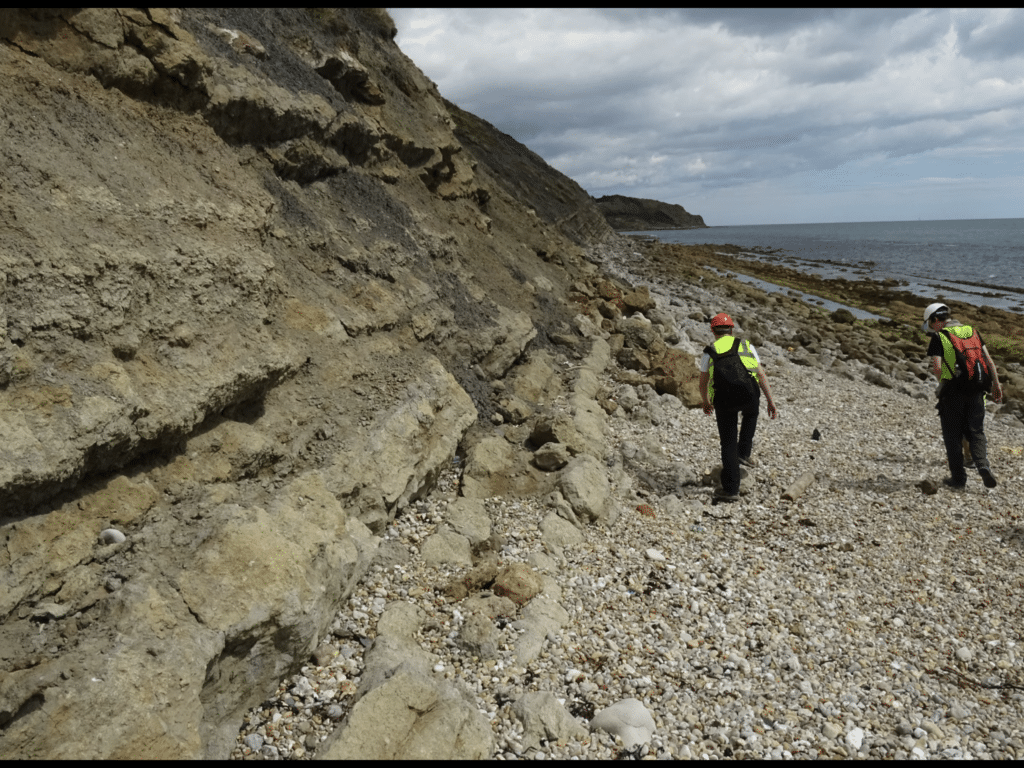
The strata are fossil rich and good Myophorella can be seen in the Corallian limestone as seen previously on the Ringstead section. This takes us as far as Shortlake and the PGL outdoor activity centre.
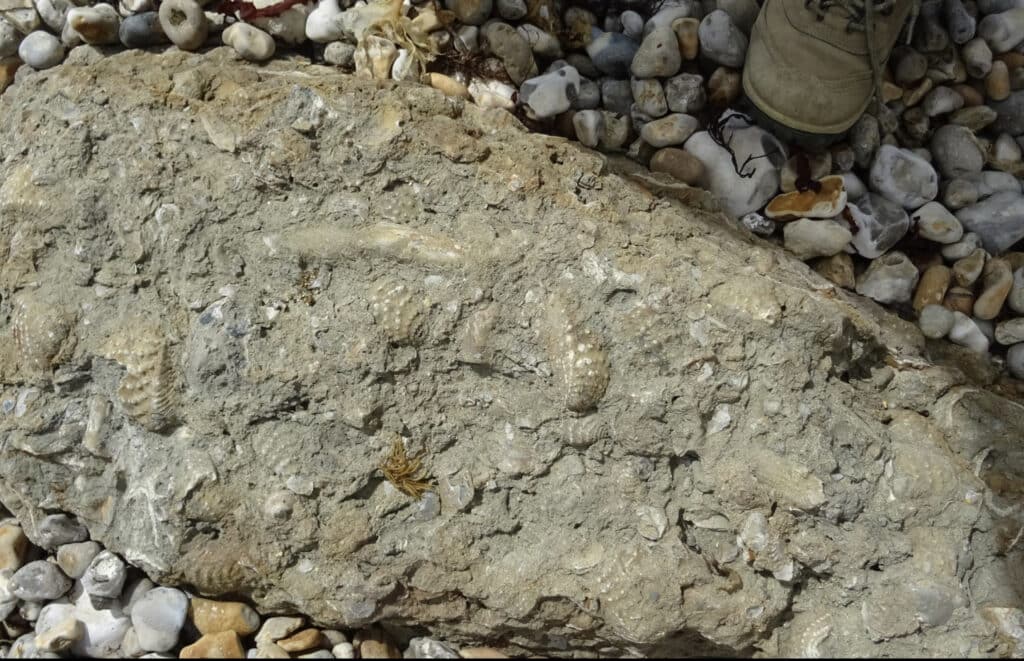
Join us in helping to bring reality and decency back by SUBSCRIBING to our Youtube channel: https://www.youtube.com/channel/UCQ1Ll1ylCg8U19AhNl-NoTg SUPPORTING US where you can: Award Winning Independent Citizen Media Needs Your Help. PLEASE SUPPORT US FOR JUST £2 A MONTH https://dorseteye.com/donate/

